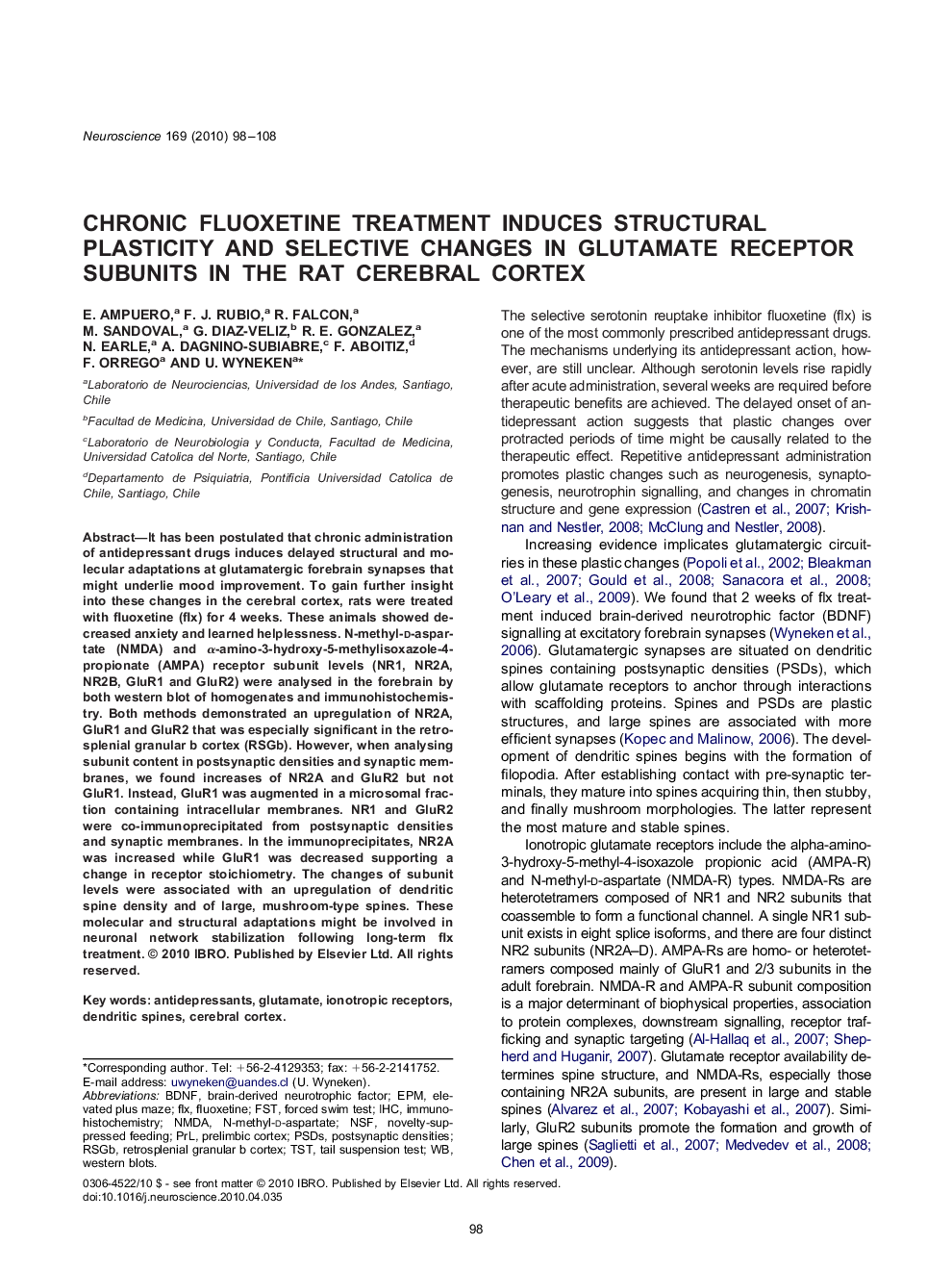| Article ID | Journal | Published Year | Pages | File Type |
|---|---|---|---|---|
| 4339409 | Neuroscience | 2010 | 11 Pages |
It has been postulated that chronic administration of antidepressant drugs induces delayed structural and molecular adaptations at glutamatergic forebrain synapses that might underlie mood improvement. To gain further insight into these changes in the cerebral cortex, rats were treated with fluoxetine (flx) for 4 weeks. These animals showed decreased anxiety and learned helplessness. N-methyl-d-aspartate (NMDA) and α-amino-3-hydroxy-5-methylisoxazole-4-propionate (AMPA) receptor subunit levels (NR1, NR2A, NR2B, GluR1 and GluR2) were analysed in the forebrain by both western blot of homogenates and immunohistochemistry. Both methods demonstrated an upregulation of NR2A, GluR1 and GluR2 that was especially significant in the retrosplenial granular b cortex (RSGb). However, when analysing subunit content in postsynaptic densities and synaptic membranes, we found increases of NR2A and GluR2 but not GluR1. Instead, GluR1 was augmented in a microsomal fraction containing intracellular membranes. NR1 and GluR2 were co-immunoprecipitated from postsynaptic densities and synaptic membranes. In the immunoprecipitates, NR2A was increased while GluR1 was decreased supporting a change in receptor stoichiometry. The changes of subunit levels were associated with an upregulation of dendritic spine density and of large, mushroom-type spines. These molecular and structural adaptations might be involved in neuronal network stabilization following long-term flx treatment.
